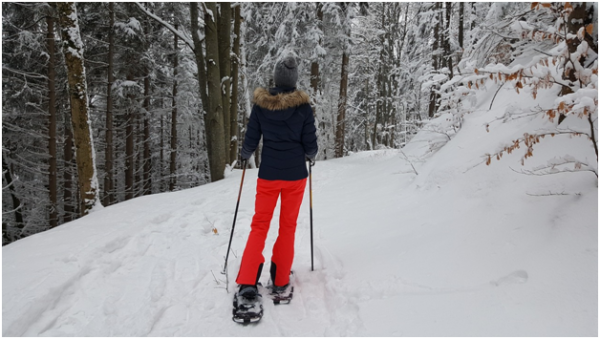How Sleep and Exercise Can Combat Winter Blues

Image by Daniel Stuhlpfarrer from Pixabay
During the Winter months, when the temperatures are freezing and the snow is piling up, the desire to curl up by the fire with a good book, a cup of hot chocolate, and some freshly baked cookies is only natural. But when your desire to hibernate becomes all-consuming, and all you want to do is stay indoors and sleep until Spring, it could be a sign of a problem.
Seasonal affective disorder (SAD), sometimes called the “Winter Blues” affects as many as 10 million Americans every year. What makes SAD different from other forms of depression is that the symptoms — which include social withdrawal, fatigue, sleep disturbances, sadness, irritability, weight changes, and an increased desire for starchy foods — is that it’s directly tied to a change in the seasons, and the symptoms resolve on their own when the days get longer. Most experts agree that it’s the reduced exposure to sunlight that causes SAD, as it disrupts the natural production of melatonin, the hormone that regulates our natural sleep cycle. Other possible causes of SAD include reduced levels of serotonin, and a deficiency in vitamin D, which contributes to reduced serotonin levels.
Regardless of the cause, there’s no need to suffer through a long Winter with depression. Although some people benefit from psychotherapy and medication to help alleviate their symptoms, lifestyle changes with a focus on exercise and a commitment to healthy sleep can reduce the symptoms of SAD.
The Exercise – Winter Blues Connection
Although there are several ways to treat the symptoms of the Winter Blues, including light therapy, one of the most effective is exercise. Even though you might feel like staying indoors for a Netflix marathon, physical activity is vital to preventing many of the effects of sunlight. Research indicates that 30-60 minutes of exercise each day can help manage symptoms.
Exercise helps control seasonal depression for several reasons. For starters, research indicates that exercise can work as well as antidepressants for some people. This is due in part to the endorphins, so called “happy” chemicals that help you feel better during and after a workout. In addition to endorphins, though, working out also increases the production of growth factor proteins, which improve your brain function by increasing nerve cell growth and new connections, in particular in the hippocampus. This increased brain function can improve mood, reducing the feelings of depression.
Even without all of the benefits to the brain, though, staying active during the colder months can help you avoid SAD in other ways. Exercising outdoors, for instance, will expose you to beneficial sunlight — even on a cloudy day — which can help spur vitamin D production and support your natural circadian rhythms and allow you to maintain a normal sleep cycle. Just getting outside for some fresh air can help you feel more energetic, and working out with friends and family helps you maintain those important connections that can boost your mood and get you through the long Winter.
Exercise, Sleep, and Depression
One of the most common symptoms of Winter depression is a change in sleeping habits. While some people suffer from insomnia, it’s actually more common to grapple with hypersomnia, or sleeping too much. This is due in large part to the changes in light. Shorter days and less natural sunlight disrupts melatonin production, throwing your sleep cycle out of balance. Melatonin essentially triggers your body to sleep when it’s dark and wake when it’s light, but when it’s dark for a larger part of the day, it’s difficult to maintain this natural rhythm.
So how can you combat the changes to your sleep schedule that Winter can bring? One of the best options is exercise. Multiple studies have shown that exercise benefits people with insomnia, with the best exercises to help you sleep moderate-intensity aerobic workouts like walking. At the same time, exercise is beneficial to hypersomnia, as it can help increase the production of melatonin, especially when you exercise outdoors in the early morning. Regularly working out in the morning triggers your body to create melatonin in the evening, so you can maintain a normal sleep schedule.
Of course, when it’s cold in the morning, getting out of a warm and cozy bed to work out can feel like the last you want to do. It can be easier to do when you get plenty of sleep at night, but avoiding some of the other habits that can come with SAD will also help regulate your sleep. For example, stick to a healthy diet, rather than constantly indulging in the creamy, starchy comfort foods you crave, and be conscious of your calorie intake if you are less active than normal so you don’t gain weight, which can affect your mood.
And while outdoor exercise is ideal, have some alternative options for indoor activities on days when the weather keeps you indoors. Do an exercise video at home, try a yoga class, or head to the skating rink for a few hours. Think about how you can exercise anywhere, and you’ll help improve your mood and your sleep all the way through to Spring.
